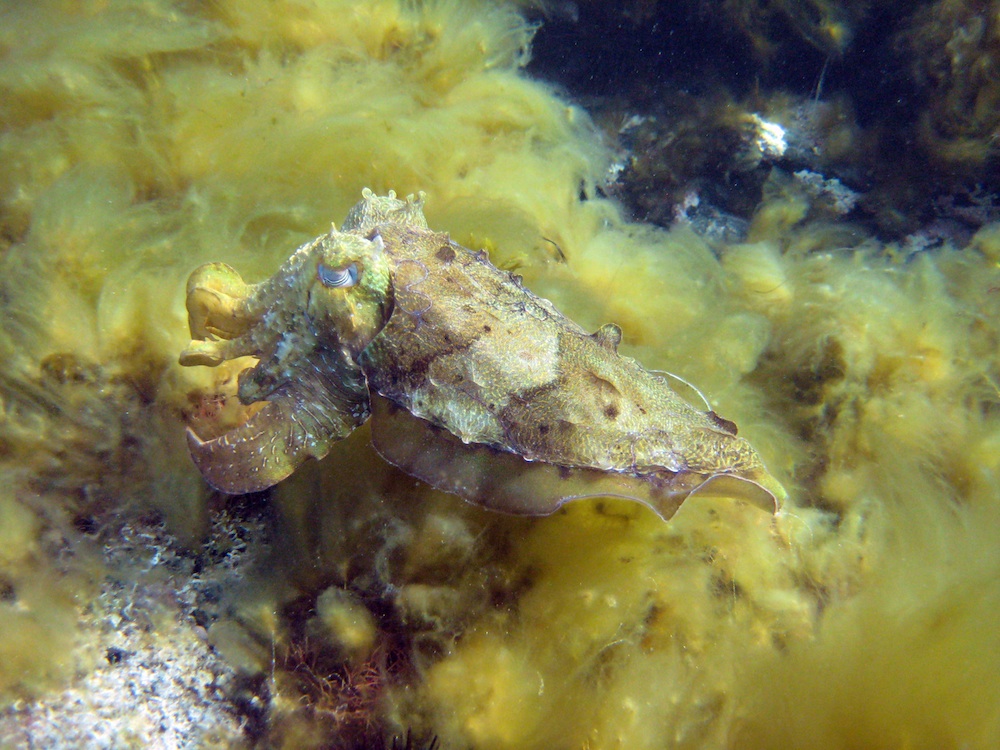Color-Changing 'Squid Skin' Designed in Lab

Updated on June 10 at 3:15 p.m. ET.
Artificial skin mimicking that of squids and octopuses could one day lead to electronic camouflage suits, researchers say.
Octopuses, squid and cuttlefish are all cephalopods, sea creatures that can rapidly change the color of their skin to conceal themselves or to communicate with others. The animals accomplish this with dense networks of cells known as chromatophores, which contain sacs of pigment and are embedded in the creatures' skin. Muscles around the chromatophores can make these pigment cells expand, turning them darker, or contract, causing them to turning them lighter; this strategy permits the animals to generate complex, dynamic patterns of color.
Now, materials scientist Aaron Fishman at the University of Bristol in England and his colleagues have designed a system that mimics how cephalopod skin works. One application could be fast-acting camouflage, for "a cloaking suit that is adept to blending into a variety of environments," Fishman told Live Science. [Cuttlefish Cuties: Photos of Color-Changing Cephalopods]
To design of the new artificial cephalopod skin involves soft, elastic materials into "muscles" that can rapidly change in size and shape in response to electrical signals. Arrays of dye spots are embedded into the "smart materials" making up these muscles. When the muscles changed size and shape, the dye spots would respond appropriately, either expanding or contracting to change the color of the sheet.
"We were able to mimic patterning seen in biological chromatophores," Fishman said. For example, the researchers were able to mimic the "passing cloud" display of the Australian giant cuttlefish, the largest-known living cuttlefish species; this pattern involves blue-green bands traveling as waves across the animals' skin, which distracts and diverts predators.
Previously, another research team created its own version of artificial cephalopod skin. That device consisted of flexible sheets of light sensors and temperature-sensitive dye that could automatically sense and adapt to the color of the surroundings. The new design is different in that its color-changing cells are activated by electricity and not heat, which means these cells could react faster and in a more controlled manner, Fishman said.
Sign up for the Live Science daily newsletter now
Get the world’s most fascinating discoveries delivered straight to your inbox.
In addition to camouflage applications, Fishman and his colleagues suggested this artificial cephalopod skin could be used for eye-catching suits. "Complex and dynamic patterns would stand out in times of danger, in, for example, a search-and rescue-operation," Fishman said.
The scientists detailed their findings online June 10 in the journal Interface.
Editor's Note: This article was updated to clarify that there is no squid skin prototype; the researchers designed the technology in a computer model.
Follow Live Science@livescience, Facebook & Google+. Original article on Live Science.










